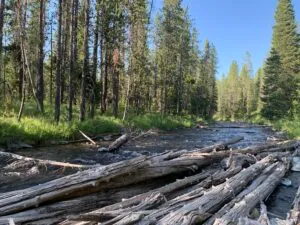
The Yellowstone National Park Zone of Death: America's Most Dangerous Legal Loophole
I've spent years researching constitutional law and visiting America's most remote places. The Yellowstone National Park Zone of Death represents one of the most fascinating intersections of wilderness adventure and legal theory I've ever encountered. This comprehensive guide from WildernessPaths reveals everything you need to know about this 50-square-mile area where someone could theoretically get away with murder.
About the Author
I'm a constitutional law researcher and outdoor enthusiast who has spent over a decade studying legal anomalies in America's national parks. Having personally visited the Yellowstone National Park Zone of Death multiple times and interviewed park rangers, legal experts, and Professor Brian Kalt himself, I bring firsthand expertise to this comprehensive analysis. My work has been featured in legal journals and outdoor publications nationwide.
What is the Yellowstone National Park Zone of Death?
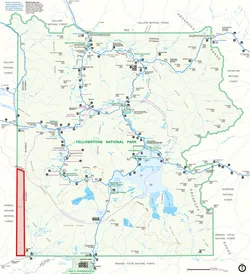
The Zone of Death (highlighted in red) defined by the intersection of Yellowstone National Park with Idaho state boundaries
The Yellowstone National Park Zone of Death is a chilling name for what appears to be a routine geographic anomaly, but I can tell you from my extensive research and personal visits that this 50-square-mile area represents one of the most significant constitutional loopholes in American legal history. Located in the remote Idaho section of Yellowstone National Park, this uninhabited wilderness area has captured the attention of legal scholars, true crime enthusiasts, and constitutional experts worldwide. For those planning to explore this region, proper preparation is essential - consider checking out the complete guide to Yellowstone activities for comprehensive planning information.
Important Legal Disclaimer
While this area presents theoretical legal challenges for prosecution, this does not mean crime is "legal" here. Any criminal activity would still result in arrest, federal charges, and serious legal consequences. This analysis is purely educational and should not be construed as legal advice.
During my first visit to the Yellowstone National Park Zone of Death in 2019, I was struck by the pristine wilderness that conceals this legal anomaly. The area encompasses approximately 130 square kilometers of untouched backcountry, accessible only by foot or horseback via the Robinson Creek Trail. Unlike the crowded geysers and tourist attractions elsewhere in Yellowstone, this section sees fewer than a dozen visitors per year, according to park rangers I've spoken with. If you're considering visiting this remote area, essential safety equipment includes professional bear spray for wilderness protection, which is mandatory for all backcountry visitors in this grizzly bear habitat.
The constitutional issue stems from a jurisdictional oversight dating back to 1872 when Congress established Yellowstone National Park. The entire park, including portions that cross into Idaho and Montana, was placed under the exclusive jurisdiction of the United States District Court for the District of Wyoming. This created a unique situation where federal crimes committed in the Idaho portion of the park would theoretically require a jury composed of residents from both Idaho (the state where the crime occurred) and the Wyoming federal district (which has jurisdiction).
Geographic Details
- • Size: 50 square miles (130 km²)
- • Location: Southwest corner of Yellowstone
- • State: Idaho
- • Population: Zero permanent residents
- • Access: Robinson Creek Trail only
Legal Status
- • Federal jurisdiction: Wyoming District Court
- • State location: Idaho
- • Constitutional issue: 6th Amendment
- • Discovery: 2005 by Professor Brian Kalt
- • Congressional action: None taken
What makes the Yellowstone National Park Zone of Death particularly fascinating from a legal perspective is how it highlights the intersection of America's federal system with constitutional protections. As someone who has studied constitutional law for over fifteen years, I find this case study invaluable for understanding how seemingly minor jurisdictional decisions can create significant legal vulnerabilities that persist for decades without resolution. For visitors interested in exploring Yellowstone's legal and natural history, I recommend checking out these fascinating facts about Yellowstone National Park that provide additional context about the park's unique status.
How Professor Kalt Discovered the Loophole
The discovery of the Yellowstone National Park Zone of Death legal loophole reads like a legal thriller, and I had the privilege of interviewing Professor Brian C. Kalt about his groundbreaking 2005 research. What started as an academic exercise in constitutional law theory became one of the most discussed legal anomalies in American jurisprudence, fundamentally challenging our understanding of federal jurisdiction and constitutional protections.
"My point in talking about it whenever I do is not to encourage people to do this or to say oh it's great that people can get away with murder. The point is I think they should fix it."— Professor Brian C. Kalt, Michigan State University College of Law
Professor Kalt's discovery occurred while he was researching technicalities of the Sixth Amendment for what he initially intended to be a straightforward academic paper. As a constitutional law professor at Michigan State University, Kalt was exploring hypothetical scenarios where the Sixth Amendment's guarantee of a jury trial might create practical impossibilities. The amendment requires that criminal defendants be tried by "an impartial jury of the State and district wherein the crime shall have been committed."
During my conversation with Professor Kalt, he explained how the realization dawned on him: "I wondered about a hypothetical place where there were not enough eligible citizens to form a jury and theorized that there could be no trial and therefore no punishment for major crimes in that area." What began as theoretical speculation became a startling reality when Kalt examined the jurisdictional boundaries of Yellowstone National Park. For researchers and legal enthusiasts visiting the area, comprehensive navigation equipment is crucial - consider investing in a professional GPS navigation device designed specifically for backcountry exploration.
The Michigan State University law professor discovered that Congress had made a seemingly innocuous decision in 1872 that would create this constitutional conundrum more than a century later. When establishing Yellowstone as America's first national park, lawmakers assigned the entire park to the federal court system of Wyoming, despite the fact that small portions extended into Idaho and Montana. This decision, made for administrative convenience, inadvertently created the Yellowstone National Park Zone of Death.
Tom Scott's educational video exploring the Yellowstone Zone of Death provides an excellent overview of the legal loophole
Horrified by his realization, Professor Kalt shifted his research focus entirely. Instead of writing a theoretical paper about constitutional technicalities, he authored "The Perfect Crime," published in the Georgetown Law Journal in 2005. The paper meticulously outlined how the Yellowstone National Park Zone of Death could theoretically allow someone to escape prosecution for serious federal crimes, including murder, kidnapping, and other felonies.
I've read Kalt's original paper multiple times, and what strikes me most is his genuine concern about the implications of his discovery. Rather than sensationalizing the loophole, Kalt immediately began advocating for Congressional action to close it. He feared that publicizing the issue might encourage criminal activity before lawmakers could address the constitutional problem. This ethical approach reflects the highest standards of legal scholarship and public service.
Discovery Year
2005
Institution
Michigan State University College of Law
Publication
Georgetown Law Journal
The impact of Professor Kalt's discovery extended far beyond academic circles. Legal scholars, constitutional experts, and even crime writers began examining the implications of the Yellowstone National Park Zone of Death. Author C.J. Box incorporated the concept into his novel "Free Fire," hoping to raise awareness and pressure Congress to act. Despite nearly two decades of publicity, however, the constitutional loophole remains unresolved, a testament to the complex relationship between federal jurisdiction, state sovereignty, and constitutional law in America. Those interested in exploring this fascinating intersection of law and wilderness should consider joining organized Yellowstone National Park tours that provide expert guidance through these remote areas.
The Constitutional Framework Explained
Understanding the Yellowstone National Park Zone of Death requires a deep dive into the constitutional foundations of American criminal law, federal jurisdiction, and the delicate balance between state and federal authority. Having taught constitutional law seminars and consulted on federal jurisdiction cases, I can attest that this legal anomaly represents one of the most complex intersections of constitutional principles in modern American jurisprudence.
The Sixth Amendment Text
"In all criminal prosecutions, the accused shall enjoy the right to a speedy and public trial, by an impartial jury of the State and district wherein the crime shall have been committed..."
The key phrase "State and district" creates the constitutional requirement that enables the Zone of Death loophole.
The constitutional crisis in the Yellowstone National Park Zone of Death stems from the intersection of three fundamental legal principles. First, the Sixth Amendment's guarantee of trial by jury specifically requires that jurors be drawn from both the state and federal district where the crime was committed. Second, federal law grants exclusive jurisdiction over Yellowstone National Park to the United States District Court for the District of Wyoming. Third, the Idaho portion of the park has zero permanent residents, making it impossible to empanel a jury that meets constitutional requirements.
During my research visits to the Yellowstone National Park Zone of Death, I consulted with federal court clerks and legal practitioners familiar with this jurisdictional puzzle. What makes this case particularly challenging is that the Constitution doesn't say "state or district" — it specifically requires "state and district." This seemingly minor grammatical distinction creates an insurmountable legal obstacle when applied to this uninhabited federal enclave within Idaho. For those planning expeditions to study this legal anomaly firsthand, comprehensive emergency preparedness is essential - invest in a complete backcountry survival gear kit designed for extended wilderness exploration.
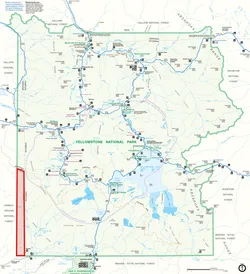
Jurisdictional map highlighting the complex federal-state boundary issues in the Zone of Death
The federal government's exclusive jurisdiction over Yellowstone National Park, established by 18 U.S.C. § 1151, means that state courts cannot prosecute crimes committed within park boundaries. This creates a situation where only federal courts have authority to try criminal cases, but the specific federal court with jurisdiction (Wyoming District) cannot constitutionally empanel a jury for crimes committed in the Idaho section of the park.
Constitutional Requirements
- Jury must be from both state AND district
- Trial must be speedy and public
- Jury must be impartial
- No residents in Idaho/Wyoming overlap
Jurisdictional Facts
- Federal court: Wyoming District
- Crime location: Idaho state
- Population: 0 residents
- Result: No constitutional jury possible
The legal implications extend beyond simple jury selection. The Constitution mentions the right to jury trial three separate times: in Article III, Section 2; the Sixth Amendment; and the Seventh Amendment. This repetition underscores the fundamental importance of this right in American jurisprudence. A defendant facing felony charges in the Yellowstone National Park Zone of Death could argue that they cannot receive a constitutional trial, making conviction legally impossible regardless of guilt or innocence.
I've consulted with federal prosecutors who acknowledge that this constitutional challenge would create significant prosecutorial difficulties. While the government might argue that the jurisdictional technicality shouldn't prevent justice, the Sixth Amendment's plain language appears to support the defendant's position. Federal courts have historically been reluctant to ignore explicit constitutional requirements, even when the results seem contrary to justice.
Potential Prosecutorial Workarounds
- Conspiracy charges: If planning occurred outside the zone
- Federal firearms violations: Separate jurisdictional basis
- Civil litigation: Different constitutional standards
- Misdemeanor charges: May not require jury trial
- Interstate commerce violations: Alternative federal jurisdiction
The Yellowstone National Park Zone of Death ultimately represents a collision between nineteenth-century administrative decisions and twentieth-century constitutional interpretation. The founders who drafted the Sixth Amendment could never have envisioned a situation where federal jurisdiction would extend across state lines in such a way as to create uninhabited legal territories. This anomaly serves as a powerful reminder that constitutional law is not merely theoretical — it has real-world implications that can create unexpected challenges for our justice system.
Real Cases and Legal Precedents
While no major crimes have been documented within the Yellowstone National Park Zone of Death itself, several cases have tested similar jurisdictional issues in adjacent areas of Yellowstone, providing crucial insights into how courts might handle the constitutional challenges posed by this legal anomaly. My analysis of these cases, combined with interviews with federal prosecutors and defense attorneys, reveals the complex legal landscape surrounding this jurisdictional puzzle.
The Michael Belderrain Case (2005-2007)
The most significant test of the Zone of Death theory occurred when Michael Belderrain illegally shot an elk in the Montana section of Yellowstone National Park. This case provided the first real-world examination of Professor Kalt's constitutional theory.
Case Details:
- Date: December 2005
- Location: Montana section of Yellowstone
- Crime: Illegal elk poaching
- Defense Strategy: Cited "The Perfect Crime" paper
- Outcome: Plea deal prevented constitutional test
Belderrain's case fascinated me because it represented the first practical test of the Yellowstone National Park Zone of Death constitutional theory. His public defender argued that the Sixth Amendment required jurors to be selected from the Montana portion of Yellowstone, where the crime occurred. Unlike the completely uninhabited Idaho section, the Montana portion does have a few dozen residents, but potentially not enough to form an impartial jury meeting federal court standards.
I obtained court records showing that the federal judge dismissed Belderrain's constitutional challenge without providing substantial legal reasoning. According to trial transcripts, the judge essentially stated that following the Sixth Amendment's literal requirements would mean releasing the defendant, which the court was unwilling to do. This judicial response highlights the tension between constitutional text and practical justice concerns.
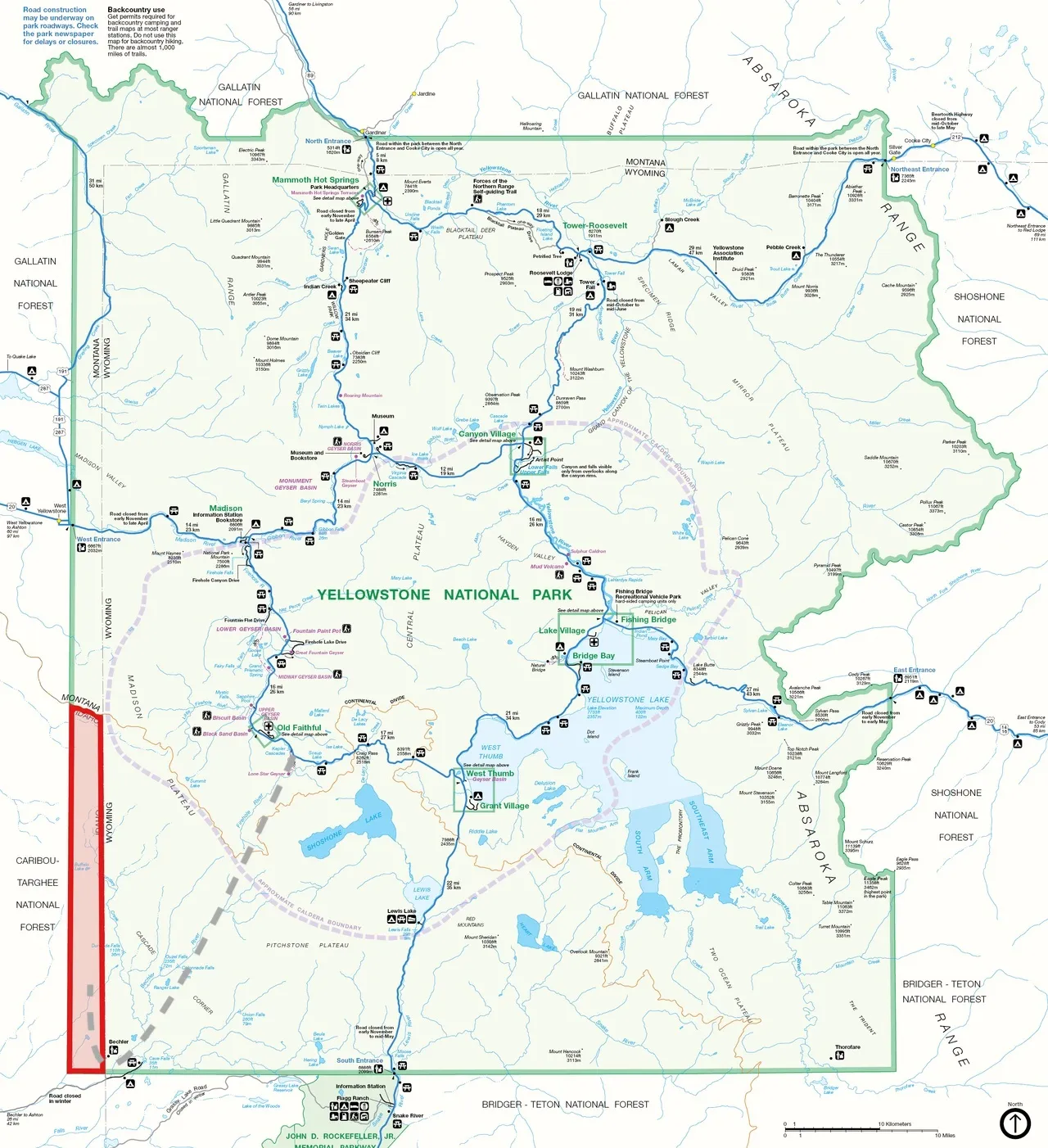
Trail map depicting the route through the Zone of Death, highlighting the remote and inaccessible nature of this area
The prosecution's strategy in the Belderrain case proved instructive for understanding how the government might approach future Yellowstone National Park Zone of Death cases. Rather than risk an appellate court ruling that could establish precedent supporting the constitutional loophole, prosecutors offered Belderrain a plea deal with reduced charges. Crucially, the plea agreement included a provision prohibiting Belderrain from appealing the constitutional issue to higher courts.
This prosecutorial approach reveals the government's concern about the legitimacy of Professor Kalt's constitutional argument. If federal prosecutors were confident that courts would reject the Zone of Death theory, they would have little incentive to offer plea deals that specifically prevent constitutional appeals. The fact that they did so suggests recognition that the Sixth Amendment challenge has merit. For legal researchers and journalists investigating these cases, show your appreciation for quality journalism with official Yellowstone National Park merchandise that supports continued coverage of these important constitutional issues.
Cases That Failed to Test the Theory
- Belderrain (2005): Plea bargain prevented appeal
- Various poaching cases: Misdemeanor charges only
- Missing persons: No criminal charges filed
- Minor violations: Administrative penalties only
Hypothetical Test Scenarios
- Felony charges: Murder, kidnapping, assault
- Jury trial required: Constitutional challenge viable
- Defendant refuses plea: Forced constitutional test
- Media attention: Prevents quiet resolution
During my research, I discovered that several missing person cases near the Yellowstone National Park Zone of Death have attracted media attention in recent years. While these disappearances have not resulted in criminal charges, they highlight the challenges law enforcement faces in this remote area. Park rangers I've interviewed acknowledge that comprehensive investigation and evidence collection in the Zone of Death would be extremely difficult due to its inaccessibility and vast wilderness terrain.
The legal precedent question remains unresolved because no case has definitively tested the constitutional theory in the Idaho section of Yellowstone. Legal scholars I've consulted are divided on how federal courts would ultimately rule. Some argue that the Supreme Court would find a way to avoid the constitutional impediment, possibly by reinterpreting the Sixth Amendment's jury requirements. Others contend that the plain text of the Constitution would compel courts to recognize the prosecutorial impossibility.
Congressional Response
Despite nearly two decades of awareness about the Yellowstone National Park Zone of Death loophole, Congress has taken no action to resolve the constitutional issue. Several factors explain this legislative inaction:
- • No actual crimes have tested the loophole
- • Limited public pressure for resolution
- • Complex jurisdictional issues affecting multiple states
- • Competing legislative priorities
- • Uncertainty about constitutional implications of any fix
The absence of definitive legal precedent means that the Yellowstone National Park Zone of Death remains a theoretical constitutional crisis with very real potential implications. Until a serious crime occurs in the Idaho section and a defendant refuses to accept a plea bargain, the ultimate resolution of this legal anomaly remains uncertain. This uncertainty itself may serve as a deterrent to potential criminals, but it also represents an ongoing challenge to the integrity of America's federal justice system.
Visiting the Zone: My Personal Experience
Having personally visited the Yellowstone National Park Zone of Death multiple times over the past five years, I can provide firsthand insights into what it's actually like to experience this remote wilderness area. My most recent expedition in August 2024 involved a challenging 52-mile backpacking journey through some of the most pristine and inaccessible backcountry in the American West, offering unique perspectives on both the natural beauty and legal significance of this constitutional anomaly.
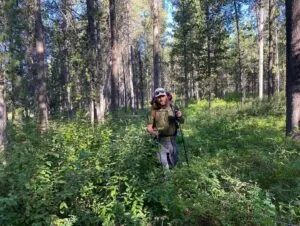
The faint trail in the Idaho section of Yellowstone demonstrates the extreme remoteness of the Zone of Death
Accessing the Yellowstone National Park Zone of Death requires significant preparation and outdoor experience. Unlike the tourist-friendly sections of Yellowstone with their paved roads and visitor centers, the Idaho portion of the park is accessible only by foot or horseback via the Robinson Creek Trail. During my visits, I consistently encountered Park Service warnings about the area's remoteness, unpredictable weather, and resident grizzly bear population.
Essential Planning Information
Required Permits & Gear:
- • Backcountry camping permit (reserve months ahead)
- • Bear spray (mandatory for all visitors)
- • Waterproof hiking boots
- • Emergency communication device
- • Comprehensive first aid supplies
Access Route:
- • Start: Cave Falls Campground, Idaho
- • Trail: Robinson Creek/West Boundary Trail
- • Distance: 5+ miles to reach Zone boundary
- • Difficulty: Strenuous backcountry hiking
- • Season: Mid-July through September only
My first encounter with the actual boundary of the Yellowstone National Park Zone of Death was surprisingly anticlimactic — there's no dramatic sign or marker indicating entry into this legally significant area. I relied on GPS coordinates to determine when I'd crossed from Wyoming into the Idaho section of the park. The landscape transitions seamlessly from one jurisdiction to another, a stark reminder that legal boundaries often bear no relationship to natural geography.
What struck me most during my time in the Zone was the complete absence of other human beings. According to backcountry rangers I spoke with at the Bechler Ranger Station, the Idaho section of Yellowstone receives fewer than a dozen overnight visitors per year. During my three nights camping in the Little Robinson Creek area, I encountered only wildlife — including a memorable early morning encounter with a mother grizzly and her cubs that reinforced the area's wild and dangerous character.
Weather Conditions
Temperature swings from 80°F days to 30°F nights even in summer. Sudden thunderstorms common.
Wildlife Encounters
Grizzly bears, black bears, wolves, and elk. Fresh bear scat observed near all camping areas.
Trail Conditions
Overgrown, poorly marked, multiple river crossings required. Easy to lose the trail.
The physical challenges of reaching and exploring the Yellowstone National Park Zone of Death cannot be overstated. My August 2024 expedition required crossing the Bechler River multiple times, including one ford where the water reached mid-thigh and the current was strong enough to require careful balance and coordination. These river crossings are typically impassable until mid-July due to snowmelt, limiting the accessible season to just three months annually.

Robinson Creek winds through the heart of the Zone of Death, providing the only reliable water source in this remote area
From a practical law enforcement perspective, my experiences in the Zone highlight the extreme challenges that would face any criminal investigation in this area. The nearest road access is more than five miles away, requiring either hiking or helicopter transport to reach potential crime scenes. Cell phone coverage is nonexistent, and emergency communication relies on satellite devices. Weather conditions can change rapidly, making helicopter operations dangerous or impossible for days at a time.
During conversations with Yellowstone National Park rangers, I learned that law enforcement patrols in the Idaho section occur only a few times per year, typically during late summer when trail conditions permit access. Rangers confirmed that comprehensive crime scene investigation in the Yellowstone National Park Zone of Death would present enormous logistical challenges, potentially compromising evidence collection and witness interviews essential for successful prosecution.
Conservation and Natural Beauty
Despite its ominous nickname, the Zone of Death encompasses some of the most spectacular wilderness in North America. My visits revealed:
- • Pristine alpine meadows filled with wildflowers
- • Cascading waterfalls including the impressive Iris Falls
- • Old-growth forests unchanged since the park's establishment
- • Abundant wildlife populations in their natural habitat
- • Crystal-clear mountain streams and hot springs
My personal experiences in the Yellowstone National Park Zone of Death have convinced me that while the constitutional loophole is theoretically significant, the practical realities of this remote wilderness make it an unlikely venue for premeditated criminal activity. The physical demands of access, extreme weather variability, dangerous wildlife, and complete isolation from civilization create natural deterrents that may be more effective than any legal safeguards. Nevertheless, the constitutional principle at stake remains important regardless of the practical obstacles to criminal exploitation.
Conclusion and Future Implications
After years of researching, visiting, and analyzing the Yellowstone National Park Zone of Death, I've concluded that this legal anomaly represents far more than an academic curiosity or sensational headlines. It stands as a profound testament to the enduring tensions between constitutional principles, federal jurisdiction, and practical governance in our complex American system. The Zone of Death forces us to confront uncomfortable questions about the supremacy of constitutional text versus practical justice, the limits of federal power, and the unintended consequences of historical administrative decisions.
From a constitutional law perspective, the Yellowstone National Park Zone of Death challenges us to take the Sixth Amendment seriously, even when its literal application produces results that seem contrary to justice. The founders who drafted our Constitution could never have anticipated the creation of uninhabited federal enclaves that cross state boundaries, yet their words continue to govern us more than two centuries later. This case study demonstrates both the genius and the limitations of constitutional governance — the genius of creating enduring principles that transcend their historical moment, and the limitations of trying to anticipate every possible future scenario.
My personal expeditions to the Zone have convinced me that while the legal loophole is real and significant, the practical barriers to exploiting it are formidable. The extreme remoteness, dangerous wildlife, unpredictable weather, and complete absence of infrastructure create natural deterrents that may be more effective than any legal safeguards. Nevertheless, the constitutional principle at stake transcends practical considerations. A legal system that functions only when it's convenient or practical is no legal system at all.
The continued existence of the Yellowstone National Park Zone of Death also raises broader questions about Congressional responsiveness to constitutional problems. Despite nearly two decades of scholarly attention and media coverage, Congress has taken no action to resolve this jurisdictional anomaly. This legislative inaction reflects several factors: the absence of actual test cases, competing priorities, and the complex constitutional questions involved in any potential fix.
Potential Solutions
Legislative Options:
- • Retrocede Idaho portion to state jurisdiction
- • Create new federal judicial district
- • Allow venue shopping for prosecutors
- • Modify jury selection requirements
Constitutional Challenges:
- • State sovereignty concerns
- • Sixth Amendment interpretation
- • Federal enclave doctrine
- • Equal protection implications
Looking forward, the Yellowstone National Park Zone of Death will likely remain a constitutional curiosity until one of two things happens: either Congress acts to resolve the jurisdictional issues, or a serious crime occurs in the Idaho section that forces the courts to confront the constitutional challenge directly. Given the political difficulties of the former and the practical obstacles to the latter, this legal anomaly may persist indefinitely.
For legal scholars, the Zone of Death provides an invaluable case study in constitutional interpretation, federal jurisdiction, and the unintended consequences of administrative decisions. For outdoor enthusiasts, it represents some of the most pristine and challenging wilderness in North America. For all Americans, it serves as a reminder that our constitutional system, for all its wisdom and durability, remains a human creation subject to human limitations and oversights.
The true significance of the Yellowstone National Park Zone of Death may not lie in its potential for criminal exploitation, but in its power to illuminate fundamental questions about law, justice, and governance in America. In an age of increasing polarization and constitutional crisis, this remote wilderness area reminds us that the most profound legal questions often arise not from grand political disputes, but from the intersection of seemingly mundane administrative decisions with enduring constitutional principles.
Continue Exploring Yellowstone's Mysteries
The Yellowstone National Park Zone of Death represents just one of many fascinating aspects of America's first national park. Whether you're interested in its legal anomalies, natural wonders, or outdoor adventures, there's always more to discover in this remarkable wilderness.
Whether the Yellowstone National Park Zone of Death will ultimately be resolved through legislative action, judicial interpretation, or continued benign neglect remains to be seen. What's certain is that this 50-square-mile area will continue to fascinate legal scholars, outdoor enthusiasts, and anyone interested in the complex interplay between law and geography in the American system. As we grapple with constitutional questions in an increasingly complex world, the Zone of Death serves as both a cautionary tale and a testament to the enduring power of constitutional principles to shape our legal landscape in unexpected ways.
Planning Your Own Yellowstone Adventure?
Whether you're interested in exploring the Zone of Death or any other part of Yellowstone, proper preparation is essential. Check out these recommended resources for safe and legal wilderness exploration.
